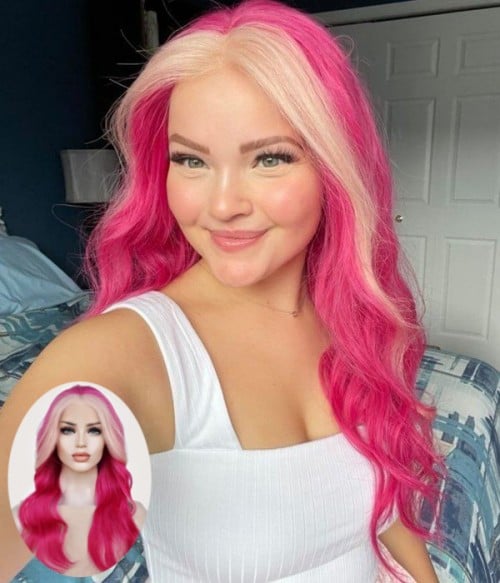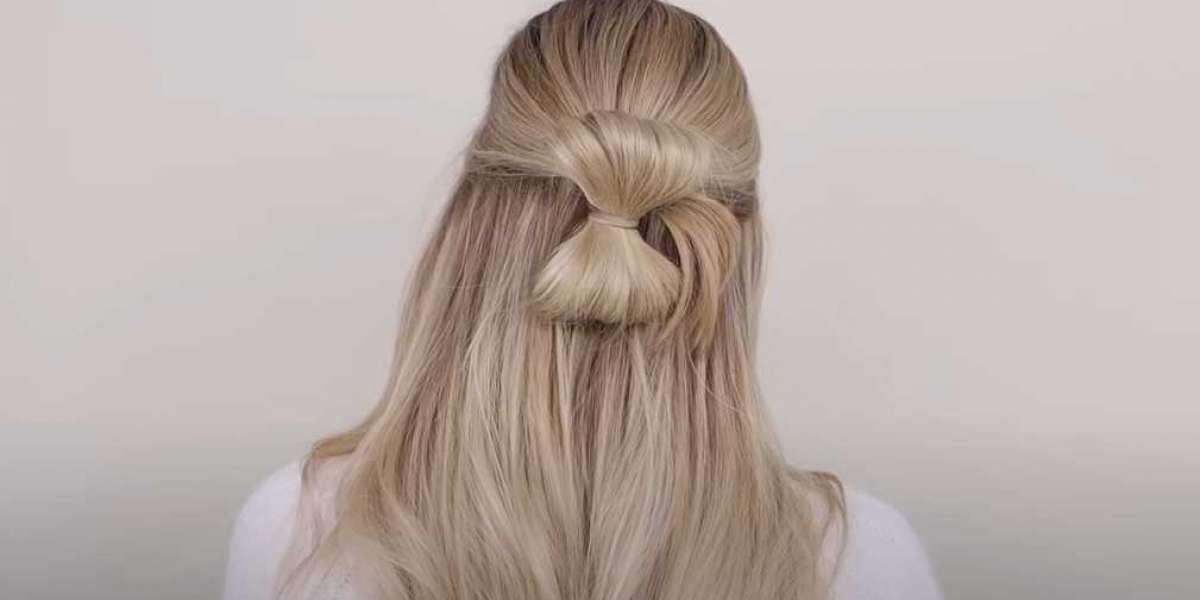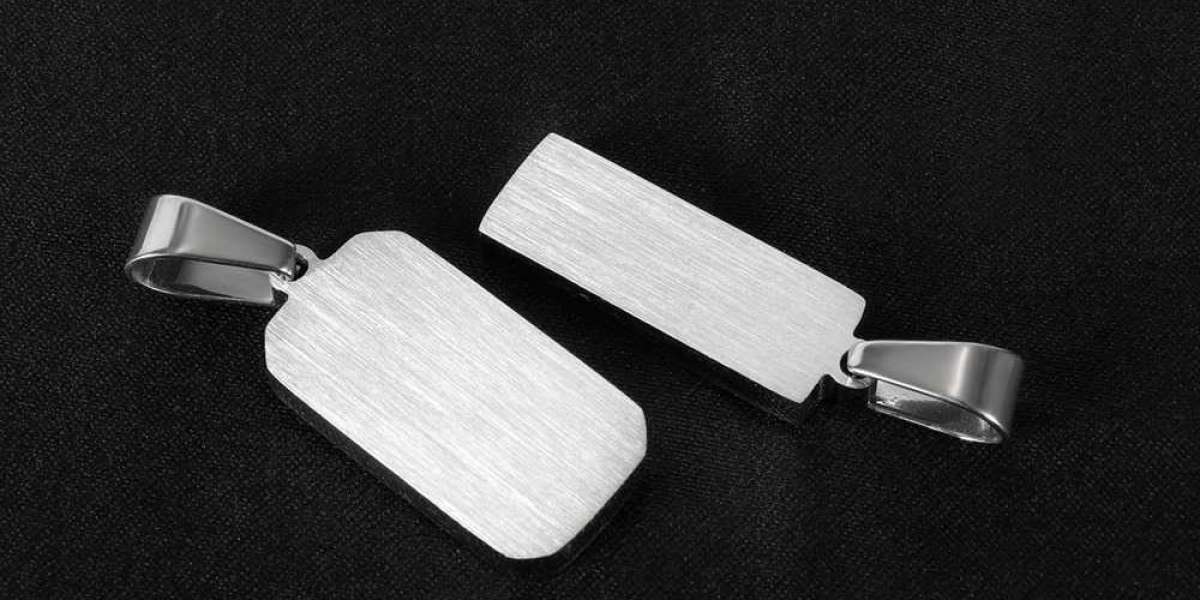Make sure your wigs are comfortable before proceeding with the rest of the process. When you purchase two wigs from the same company, you can be confident that the sizing will be consistent, which is important when wearing wigs. Decide where you want the beginning of your second wig to be and where you want the end of your first wig to be before starting the procedure. When using small scissors to cut the fibers themselves, you should only cut the fibers themselves and not the surrounding fibers. If you're cutting the fibers themselves, make sure to only cut the connection points (elastic, lace, skin cap, and/or netting), not the fibers. When it comes to cutting the fibers themselves, the ability to cut smoothly is particularly important. You can cut the second wig to the exact same measurements as the first wig and stitch it together with strong thread to ensure that the wig is as secure as possible and does not come undone. It is possible to trim the hair a little closer to the section joins in order to achieve a more seamless and seamless blend between the sections.
I'm looking for the most efficient method to use when creating a widow's peak for a wig so that I can achieve the best results possible.
In order to achieve widow's peaks, I personally prefer to make or purchase lace front wigs because they appear more natural in comparison to other options
Attempting to make your own wig is not only time-consuming and expensive; purchasing a lace-front wig is generally more expensive than purchasing an average wig, and this is for a good reason (as you will quickly discover should you attempt to make your own wig
)This project will necessitate the use of a variety of supplies, including lace in a color that is close to your skin tone, a ventilating tool (such as an eye hook or a needle), and additional fibers in order to be completed successfully
If you want a more natural-looking hairline, you must use individual hair ties in the lace, which is impossible to achieve with any other technique

The use of false hairlines, which are particularly effective in this situation, is also an option for achieving the desired effect. Their appearance may be a little less natural than that of traditional methods, but they are significantly faster and easier to use than traditional methods. To glue additional hair along the wig's hairline, first apply a flexible glue, such as tacky glue or silicone-based glue, and then cut the hair so that it fits perfectly along the new hairline you have created.
The most effective method of keeping your wig in place while you style it when you are styling it yourself is described below. Is there a specific name or design that you would recommend for the type of head stand that you use? Do you happen to know what it is, by any chance?
In order to ensure that you get the best fit possible, I recommend that you purchase a wig head that is the same size as your own head when shopping for one. In comparison to the smaller Styrofoam heads, which have a more feminine appearance, a typical human head is approximately the same size as the smaller Styrofoam heads, according to the manufacturer. Given my large head, the more masculine-looking Styrofoam wig heads are slightly smaller in size than the more feminine-looking Styrofoam wig heads, which is to be expected. Fortunately, I discovered one on the internet for about $25 that met all of my requirements. Additional padding, such as duct tape, batting, or even rolled-up socks in a bag, should be applied to the Styrofoam wig head before it is worn to ensure that it is the proper size for your head before wearing it.
In addition to being an excellent all-around tool, it is particularly useful when styling wigs into ponytails and applying heavy-duty glue to wigs that have been tailored to a specific size, among other things. Winning the lottery to purchase a wig stand is an excellent financial decision. Not only does it represent a practical financial investment in the wig industry, but also because it represents an excellent financial investment in general. I purchased a wig stand from Amazon for approximately $30 in order to level the wig stand that I am currently using for my current project. An extremely useful feature is that it comes with a leveling gauge attached to it. Arda Wigs offers a wide variety of wig stands and wig heads, all of which are of the highest possible quality!
The use of long quilting pins to hold the wig in place is preferable to me because they are easy to remove. In contrast, T-shaped pins are ideal if you intend to use them for any type of rough styling with your hair, such as braiding. To ensure that my wig head remains in good working order, I maintain two sets of pins: one for my wig head and another for all of my sewing projects. This allows me to keep my wig head in good working order despite the fact that it is subjected to a lot of abuse. It is possible to prevent lace from being torn while styling your hair by applying bias tape to the top of your hairline and then pinning it to the wig stand. However, this is not recommended because it can cause lace to fray.
In my mind, I was thinking that you might be able to walk me through the process of applying and holding my hair in place all the way from start to finish, step by step. Getting it to fit correctly is the only thing I'm having trouble with. Use of wig accessories such as wig caps, glue, bobby pins, and other similar items is recommended in order to maintain the appearance of your wig.
The first and most important step in this procedure is to flatten your hair, which should be done as soon as possible. The technique you choose will be influenced by the following factors, in addition to the texture and length of your hair:The fact that my 4C hair is extremely thick necessitates the wearing of 8-7 braids as well as the use of a nylon-based wig cap to accommodate my extremely thick 4C hair. Maintaining your hair in the smoothest and closest to your head possible condition will allow you to achieve the best possible results with your style. When I'm not wearing a wig, I'll wrap my straightened hair around itself and secure it with a wig cap to keep it from falling out while I'm not wearing it. The fact that mesh wig caps are more comfortable to wear than nylon wig caps is just one of the many reasons why some people prefer to wear mesh wig caps rather than nylon wig caps, and there are many more to consider. When you have a large amount of hair to manage, this hairstyle is more comfortable to wear; however, when you have a small amount to manage, it is not as effective as the other types.
In some cases, if your hair does not require pressing down and/or if there is no need for exposed hair for the purpose of using wig clips in the wig to hold the wig on your head, it is possible to forego the use of a wig cap completely and wear your wig without it. If your hair does not require pressing down and/or if you do not require exposed hair for the purpose of wig clips in the wig to hold the wig to your head, you may choose to forego the use of a wig cap entirely. If you do not require exposed hair for the purpose of wig clips in the wig to hold the wig to your head, you may choose to forego the use of a wig cap entirely. The use of a wig cap is optional if you do not require any exposed hair in order to use wig clips in the wig in order to secure the wig to your head. If you do not require any exposed hair, you may choose not to use one at all. It's critical to ensure that any excess hair is evenly distributed throughout your head (there should be no obvious bumps or lumps to be discovered) before you begin the process.
In order to keep extremely heavy wigs in place while wearing them, wig grips, which are readily available at most beauty supply stores, can be used to help secure them.







